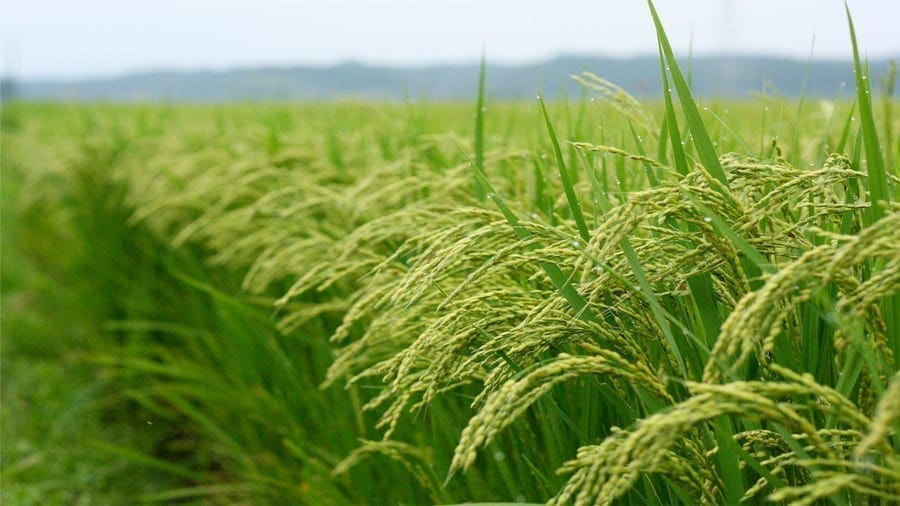To survive in a continent that is mostly dark, food businesses have opted to shift to solar, a more reliable and cost-effective source of energy. Unlike the developed world where solar is adopted for lofty environmental goals, in Africa we are doing it out of necessity.
Africa is home to one of the highest electricity rates in the World. According to the World Bank, industrial electricity tariffs can reach US$20-50 cents/kWh, compared to a global average electricity tariff of $10 cents/kWh.
When costs are high, industries tend to suffer. In a recent study by Energy Growth Hub, 41% of firms in Africa identified electricity as a major constraint to their business operations, the highest of any region in the World.
In addition to being very costly, power supply in Africa is often characterized by unreliability and inefficiency, resulting in additional disruption costs for operating firms. African enterprises are reported to experience power interruptions averaging more than 50 hours/month, a loss of 25 days of economic activity per year. Costly and unreliable electricity means bad business for enterprises.
Food businesses in the continent are particularly disadvantaged as they cannot afford to transfer the high costs to a price sensitive customer. Staying without electricity is also out of question as most foods are perishable and need to be kept under refrigeration.
To survive in a continent that is mostly dark, food businesses have opted to shift to solar, a more reliable and cost-effective source of energy. Unlike the developed world where solar is adopted for lofty environmental goals, in Africa we are doing it out of necessity.
Multinationals lead the way in solar adoption
Early adopters of solar energy in Africa are big multinational giants such as Nestlé, Unilever, Heineken, and Diageo.
Unlike small food companies in the continent, these multinationals have the financial muscle to easily transition to solar energy. Apart from reliability and affordability, solar energy also fits well in their ambitious sustainability goals, making it an attractive venture.
In February 2020, Nestlé, which has a goal of achieving net-zero emissions across its supply chain by 2050, inaugurated a private solar station in Morocco. According to the company, the station, adjacent to the company’s factory, will produce 1.7 gigawatts of electricity per year, eliminating more than one million kilograms of CO2.
Guinness Ghana Breweries, a subsidiary of British brewing giant Diageo, has also embarked on a mission to decarbonize operations, commissioning its own solar photovoltaic system on the roof of its brewery in Accra. The plant will supply 1,500 MWh per year, enough to meet 19% of the electricity requirements of the facility, while avoiding 10,000 tonnes of CO2 emissions.
Still in West Africa, Heineken-owned Nigeria Breweries officially commissioned its solar plant at its Ibadan brewery. Given Nigeria’s chronic power issues, the plant with an annual capacity of 1,000 megawatts per hour (MWh) will supply the plant with reliable and affordable power all year-round while helping Heineken reduce the site’s CO2 emissions by over 10,000 tonnes.
Following the example of Heineken and Diageo, a leading beverage player in Nigeria, Big Bottling Company, also recently invested in a 950kW solar system at its plant, with the firm noting that the new investment will help it offset 11,743 tons of CO2 over the project’s ten-year lifetime.
In East Africa, East Africa Breweries Limited, Diageo’s blue-chip company has also sought approval from the Energy and Petroleum Regulatory Authority (EPRA) to set up its own solar power stations. If given the go-ahead, EABL will put up three solar power stations with a combined capacity of 13.9MW. A 2.2MW station will be set up at its East African Malting Limited site in Nairobi, a 9.3MW station will be set up at its brewing facility in Ruaraka, and a 2.4-MW solar power plant will be established in Kisumu, in western Kenya.
Homegrown companies take up the challenge
Home grown companies from all corners of all corners of the continet have also shifted to solar en masse. Those who haven’t are also seriously considering shifting to this green energy source as relying on the national grid is longer tenabe.
African enterprises are reported to experience power interrupts averaging more than 50hours a month which translates to a loss of 25 days of economic activity per year.
In Kenya, companies in their droves have migrated from national grid electricity to solar partly due to the high costs and occasional power blackouts. In the last one year, several notable companies have initiated projects to migrate to solar, the most notable being the Kenya Tea Development Agency (KTDA). The Agency that manages over 67 factories on behalf of small holder farmers launched a tender in March 2021 seeking independent power producers (IPPs) for the construction of a series of small-sized solar parks with capacity ranging from 300kW to 1MW. The plants will be used to power KTDA’s 29 factories, cutting the agency’s power bill by 50%.
KTDA joins a growing list of Kenyan food companies with commissioned solar power plants that include Williamson Tea, Krystalline Salt, London Distillers, Kenafric Bakeries, Kapa Oil Refineries, DPL Festive Bakeries, Menengai Oil Refineries, Bio Food Products, Mars Wrigley Confectionery and Bidco Africa.
Recognizing the cost savings associated with solar, Rwanda made the decision to go green from the beginning, launching a Rwf270 million (US$17.5m) pineapple drying factory in Ngoma district. Upon completion the Rwandan facility will have a processing capacity of 90,000 tonnes of pineapple every month, dried and packaged for both the domestic and export market.
South Africa’s acute power shortage due to load shedding has forced food enterprises to find an alternative source of energy. Many companies with ability have opted for solar to free themselves of reliance on the power utility Eskom and its associated inefficiencies.
South African Breweries, part of AB-InBev started its migration in January 2020, with a project that will see over 23,000 solar panels installed across the brewer’s seven facilities. Once all arrays are switched on, they will generate close to 14 GWh of power per year, significantly reducing the companies over reliance on solar.
Shoprite, a continental retail chain with its roots in South Africa made the switch by installing rooftop photovoltaic panels at 19 sites in South Africa and Namibia, generating 12,300 MWh of electricity a year. Its largest installation is at its Basson distribution center in Brackenfell, South Africa, covering the surface area of an entire soccer field with panels measuring 7,706 m2, generating capacity of 1MW. To reduce its impact on the planet, the retail chain also recently announced that it will add 39 solar-powered refrigerated rigid trucks to its existing solar-powered fleet of 749 trailers by the end of June 2021.
In Zimbabwe, Tanganda Tea Company Limited has also shifted to solar to cut costs. The company has constructed a US$15m solar plant to power its production facilities. According to reports by Business Times, the plant will supply the country’s largest producer of tea and coffee with 7.55MW of clean, reliable, and affordable power on an annual basis.
Funding to solarize Africa’s agriculture
The solar fever is also spreading to agriculture, capturing the imagination of small holder farmers. The arrival of big money from major financial institutions such as IFC, DFU, and Proparco is also making the transition to solar easier for farmers.
The trend on the agriculture scene is big financial institutions providing tailored loans to established local banks who then provide it to farmers at competitive rates. In Egypt, the IFC has partnered with ALEXBANK, and Agricultural bank of Egypt (ABE) to help Egyptian farmers access financing for purchase of solar irrigation systems, reducing their reliance on diesel-powered generators. IFC estimates that using solar powered pumps could save farmers up to 14 billion Egyptian pounds (US$875 million) annually in diesel fuel costs, helping reduce greenhouse gas emissions.
Provision of funds is, however, one part of the equation; solar solutions are the other. Several startups have thus grown in the region to complete the agricultural solar equation. Kenyan-based solar startup SunCulture is a good example of the startups that are helping farmers solarize. In May 2021, the startup partnered with Brookside Dairy Limited, a leading dairy in Kenya, to provide dairy farmers with solar powered irrigation systems. The farmers will use the systems to water their fodder crops and provide the livestock with reliable drinking water, improving dairy production in the long run. During the past one year, the startup has raised about US$25 million to help in expanding solar activities to 7 African nations including Ethiopia, Uganda, Zambia, Senegal, Togo, and Côte d’Ivoire.

Using solar to prevent post-harvest losses
In Africa, post-harvest losses are estimated to be between 30% and 50%. The Food and Agriculture Organization (FAO) estimates that these losses occur mainly downstream, between the production and retail stages of the supply chain.
Without electricity, farmers could not install refrigeration systems to prevent fresh foods from going bad. In rare cases where electricity was available, the high cost makes refrigeration a prohibitive venture – until the arrival of solar.
Funded mostly by foreign aid, food cooling systems are rapidly spreading in rural Africa, preventing monumental food losses, and contributing to food security. A solar-powered vegetable pack house in Trans Nzoia County, West of Kenya that was recently launched by Farm Africa., a UK-based charitable organization is a perfect example of solar investments aimed at combating post-harvest food losses. A similar project funded by the British government in Gambia’s Kafining municipality is helping farmers keep their vegetables fresh for longer. These are the notable ones but moving around the continent from Senegal in the West to Malawi in the south, hardly will you go more than three villages without seeing a solar powered cooling facility for either dairy or fresh produce.
The future is bright for solar in food
Solar has managed to stake its claim as the energy source of choice for many food businesses in Africa. Companies are shifting to solar for its reliability and cost effectiveness and are certainly not regretting it.
Reports from multinationals have proven that there are huge cost-savings in migrating to solar. Moving forward, we expect more companies in Africa to continue ditching the national grid for solar.
Faced with acute power shortages, African countries are also liberalizing their energy laws to allow companies produce their own electricity. South Africa has for instance announced that the Electricity Regulation Act would be amended to increase the threshold for exemption from applying for a license from national energy regulator NERSA to generate electricity from 1MW to 100MW. This provides a fantastic opportunity for food companies to invest more in solar.
A new trend that is expected to further accelerate transition to solar is power purchase agreements (PPA) between food companies and solar power companies. In the PPA model, the solar power provider installs, maintains, and owns solar infrastructure while the food company only pays for electricity consumed at a fixed rate. With this model, food companies are spared the acquisition and installation costs which are usually prohibitive, enabling them to adopt the technology even faster than before.
Increased funding from financial institutions such as the IFC, Standard Bank, and Proparco is also expected to further drive adoption of solar at the farm, processing, storage, retail and distribution levels. With the investments that are going into solar and the massive potential that lies ahead, we are confident that the future of solar could not be any brighter!
This feature appeared in the May/June 2021 issue of Food Business Africa. You can read the magazine HERE










